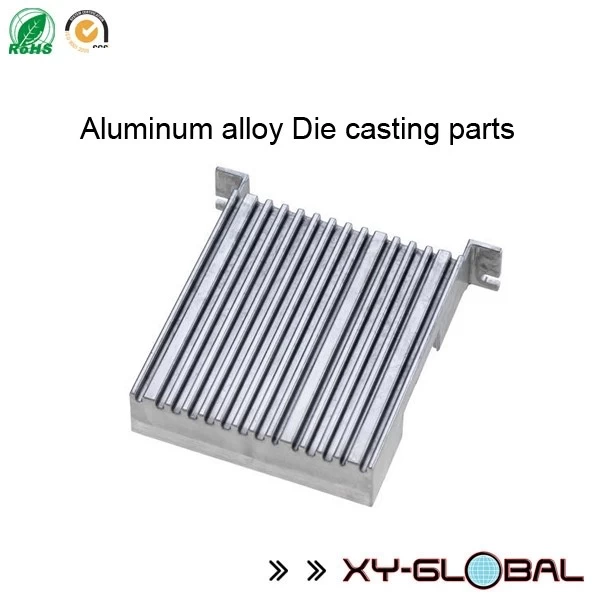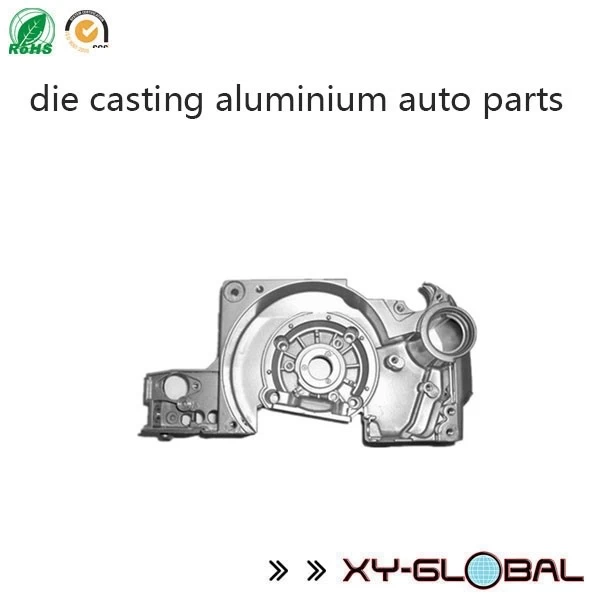Pore Defects and Causes of Aluminum Alloy Die Castings
June
www.xy-global.com
2022-03-28 18:46:23
Pore Defects and Causes of Aluminum Alloy Die Castings
The workpieces produced by aluminum alloy die casting are often scrapped due to the existence of pores. There are many reasons for the generation of pores. When solving this product quality problem, it is often impossible to start. How to take measures quickly and correctly to reduce the scrap rate caused by pores, this is the The concerns of various aluminum alloy die-casting manufacturers.
In the production of aluminum alloy die-casting, there are often the following categories according to the reasons for the generation of pores.
2.1 Pores caused by poor quality of refining and degassing
In the production of aluminum alloy die-casting, the pouring temperature of molten aluminum is usually 610-660 °C. At this temperature, a large amount of gas (mainly hydrogen) is dissolved in the molten aluminum, and the solubility of aluminum alloy hydrogen is the same as that of aluminum alloy. The temperature is closely related. It is about 0.69cm3/100g in the liquid aluminum liquid at about 660℃, and only 0.036cm3/100g in the solid aluminum alloy at about 660℃. At this time, the hydrogen content in the liquid aluminum liquid is about solid. 19 to 20 times. Therefore, when the aluminum alloy solidifies, a large amount of hydrogen is precipitated in the aluminum alloy die casting in the form of bubbles.
To reduce the gas content in the molten aluminum and prevent a large amount of gas from precipitation when the aluminum alloy solidifies and generate pores, this is the purpose of refining and degassing in the aluminum alloy smelting process. If the gas content is reduced in the molten aluminum, the amount of gas evolved during solidification will be reduced, and the resulting bubbles will also be significantly reduced. Therefore, the refining of aluminum alloys is a very important process method. The refining quality is good, the pores must be less, and the refining quality is poor, the pores must be more. The measure to ensure the quality of refining is to choose a good refining agent. A good refining agent can react at about 660 ° C to generate bubbles. The generated bubbles are not too violent, but evenly and continuously generate bubbles. The aluminum liquid is fully contacted, and the hydrogen in the aluminum liquid is adsorbed and brought out of the liquid surface. Therefore, the bubbling time should not be too short. Generally, the bubbling time should be 6 to 8 minutes.
When the aluminum alloy is cooled to 300 ℃, the solubility of hydrogen in the aluminum alloy is only less than 0.001cm3/100g, which is only 1/700 of the liquid state. The pores generated by the precipitation of hydrogen after solidification are dispersed and small. The pinhole, which does not affect the air leakage and the machined surface, is basically invisible to the naked eye.
The bubbles generated by hydrogen precipitation during the solidification of the molten aluminum are relatively large, and most of them are located in the core of the molten aluminum that solidifies at the end. Although they are also dispersed, these bubbles often lead to leakage, and often lead to the scrapping of the workpiece in serious cases.
2. 2 Pores due to poor exhaust
In aluminum alloy die casting, due to the poor exhaust passage of the mold and the poor design of the mold exhaust structure, the gas in the cavity cannot be completely and smoothly discharged during die casting, resulting in pores in some fixed parts of the product. The pores formed by the gas in the mold cavity are sometimes large and small, and the inner wall of the pores is the oxidation color of aluminum and air oxidation. It's a grey inner wall. For the pores caused by poor exhaust, the exhaust channel of the mold should be improved, and the residual aluminum skin on the exhaust channel of the mold should be cleaned in time to avoid it.
2.3 Pores caused by air entrainment due to improper die casting parameters
In the die-casting production, the die-casting parameters are improperly selected, and the filling speed of the aluminum hydraulic casting is too fast, so that the gas in the cavity cannot be extruded from the cavity in a timely and stable manner, and is drawn into the aluminum liquid by the liquid flow of the aluminum liquid. Rapid cooling, encased in a solidified aluminum alloy shell, and inability to discharge, resulting in larger pores. Such pores are often under the surface of the workpiece, and the molten aluminum inlet is less than the final confluence, pear-shaped or elliptical, and more and larger at the final solidification. For this kind of pores, the filling speed should be adjusted so that the aluminum alloy liquid flow can be advanced smoothly, and the high-speed flow will not cause air entrainment.
2.4 Shrinkage pores of aluminum alloy
Like other materials, aluminum alloys shrink during solidification. The higher the casting temperature of aluminum alloys, the greater the shrinkage. A single pore caused by volume shrinkage exists in the final solidification part of the alloy, which is irregular in shape and serious. networked. Often in the product, it exists at the same time as the pores due to hydrogen evolution during solidification. There are shrinkage pores around the hydrogen evolution pores or the entrapped pores, and there are filamentous or reticulated pores extending to the outside around the bubbles.
For this kind of porosity, the casting temperature should be solved. If the die casting process conditions allow, the molten aluminum casting temperature during die casting should be reduced as much as possible. This can reduce the volume shrinkage of the casting and reduce the shrinkage pores and shrinkage porosity. If such pores often appear in the heating part, consider adding core pulling or cold iron to change the final solidification part and solve the problem of leakage defects.
2.5 Pores caused by excessive wall thickness difference
The shape of the product often has the problem of excessive wall thickness difference. The center of the wall thickness is the place where the molten aluminum solidifies at the end, and it is also the most likely place to generate pores. The pores at this wall thickness are a mixture of precipitation pores and shrinkage pores, not general. measures to prevent.
When designing the shape of the product, it should be considered to minimize the problem of uneven wall thickness or excessive thickness, adopt a hollow structure, and consider adding core pulling or cold iron, or water cooling in the mold design, or increase the cooling of the mold here. speed. In die casting production, attention should be paid to the amount of supercooling in the thick part, and the pouring temperature should be appropriately reduced.





















